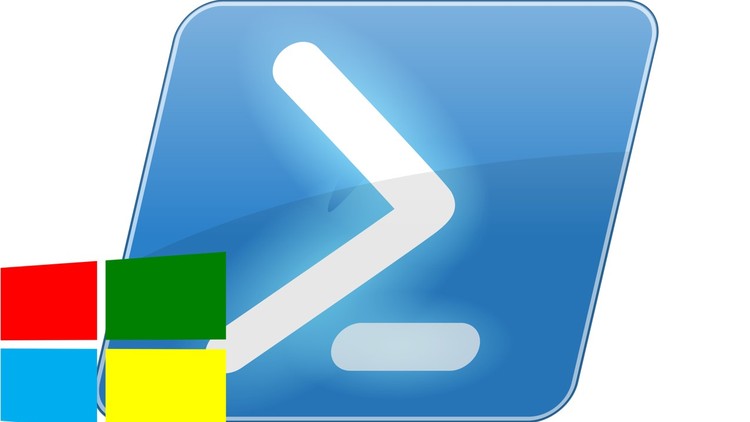Working with CLI
Using PowerShell for managing, configuring Windows Server
Using ISE
Running PS commands
Finding and Discovering Commands
Interpreting Command Help
Remoting Concepts and Terminology
Setting up PowerShell Remoting
Use Disconnected Sessions
Managing roles
Installing DNS Role with GUI/Powershell
Installing DNS Role with PowerShell on a Remote Server
Adding Forward Primary/Secondary/Stub Zone with GUI/Powershell
Adding Reverse Primary/Secondary with GUI/Powershell
Configuring Conditional Forwarders with GUI/Powershell
This course is aimed to IT Pros and is supposed to give the viewer the information they need to know to get started with PowerShell and how to manage Windows Server 2016 with its help. The goal is to provide coverage of initial server’s tasks including topics like Finding and Discovering Commands, Interpreting Command Help, Setting up PowerShell Remoting, Setting up the Network Configuration, Using Best Practice Analizer.
Sections 1-4 of the course are targeted to help to automate and script daily tasks. There are lots of live demonstrations how to use PowerShell commands. I hope it will help to do your job more efficiently.
This course will help you to:
- Manage Windows Server 2016 Roles and Fetures;
- Use Windows Server 2016 PowerShell Integrated Scripting Environment (ISE);
- Find and Discover Commands;
- Perform the Basic Tasks, such as: Renaming Computer, Changing the Time Zone, Finding/Starting/Stopping a Service on Windows Server 2016 ; Changing IP Configuration;
- Learn Remoting Concepts on Windows Server 2016;
Sections 5-6 of the course are aimed to IT Pros and is supposed to give the viewer the information they need to know to get started with PowerShell and how to manage Windows Server 2016 DNS with its help. The goal is to provide coverage of DNS server’s tasks including topics like an Overview of DNS Main Concepts, How to Install a DNS Role (on a local computer and a remote one), How to Add Different Types of Zones, Records, etc.
Get Instant Notification of New Courses on our
Telegram channel.
Note➛ Make sure your 𝐔𝐝𝐞𝐦𝐲 cart has only this course you're going to enroll it now, Remove all other courses from the 𝐔𝐝𝐞𝐦𝐲 cart before Enrolling!
Section 7 of the course is aimed to IT Pros and is supposed to give the viewer the information they need to know to get started with PowerShell and how to manage Windows Server 2016 DHCP with its help. The goal is to provide coverage of DHCP server’s tasks including topics like an How to Install a DHCP Role, How to Add/Modify Scopes or Superscopes, Scope Options, etc.
The course is targeted to help to automate and script daily tasks. There are lots of live demonstrations how to use PowerShell commands and a Server’s GUI.
This course will help you to:
- Configure primary and secondary zones
- Configure stub zones
- Configure conditional forwards
- Configure zone and conditional forward storage in Active Directory
An Introduction to Windows PowerShell, PowerShell ISE (Could be skipped)
Introduction to PowerShell ISE
Launching PowerShell (PS)
PS Version and Legacy OS
Launching ISE
ISE: the Command Pane
ISE: the Toolbar
ISE: View Customization
Working with the Help files in PowerShell
Using Help
Using Help (continued)
Using Help (continued)
Get-Help Command Options
Save Help
Updating and saving help files
Demo: Updating and saving help files
Initial Tasks in a Non-Domain Environment
Renaming the Computer
Renaming the Computer (continued)
Changing the Time Zone Settings
Turning on Remoting in a Non-Domain Environment
Finding and Starting the Service
Disabling PSRemote, Stopping the Service
Running PS commands on a remote computer
Starting a New Remote PS Session, Passing Credentials, Using Variables
Using PS Session
Changing IP configuration
Setting DNS Client
Resetting IP Configuration, Enabling DHCP
Finding and Installing New Roles and Features
Uninstalling Windows Roles and Features
Enabling, Disabling Firewall Profiles and Creatiing Firewall Rules
Using the Best Practice Analizer
Determining and Changing Current Location
Determining and Changing Current Location (continued)
Determining and Changing Current Location (continued)
Determining and Changing Current Location (continued)
Getting the Files in a Directory
Learning Pipelines and Objects’ Properties and Methods
Pipeline (continued)
Working with PSDrives, New-Items
Working with Select-Object, Where-Object Commands
Commands Used in the Sections 1-3
Commands Used to Turn on Remoting in a Non-Domain env
Commands Used to Find and start the Service
Commands Used to Disable PSRemote and Stop the Service
Commands Used to Run PS Commands on a Remote Computer
Commands Used to Start a New Remote PS Session, Pass Credentials, Use
Commands Used to Manage PS Session
Commands Used to Change IP Configuration
Commands Used to Set DNS Client
Commands Used to Reset IP Configuration and Enable DHCP
Commands Used to Find and Install a Role or Feature
Commands Used to Uninstall a Role or Feature
Commands Used to Enable, Disable Firewall Profiles and Create Firewall Rule
Commands Used for Best Practice Analyzer (BPA)
Commands Used to Determine and Change Current Location
Commands Used to Get the Files in a Directory
Commands Used in Pipeline and Objects’ Properties and Methods
Commands Used in Pipeline (continued)
Commands Used in Working with PSDrives, New-Items.
Commands Used in Working with Select-Object, Where-Object Commands
Test your PowerShell Commands Knowledge.
DNS
The DNS Overview
The DNS Overview (continued)
The Key DNS Related Definitions
DNS (demo)
DNS Role Installation
Launching DNS Manager
Adding Forward Primary/Secondary Lookup Zone; Installing DNS Role Remotely
Adding Zones in PS; Adding a Conditional Forwarder
Adding Zones in PS; Adding a Conditional Forwarder (continued)
DHCP (demo)
Checking if the DHCP Role is Installed
Installing DHCP
Instaling/Removing DHCP Role with PowerShell
Authorizing/Unauthorizing the DHCP Server
DHCP Related Files
Bindings
Adding a New Scope
Adding a New Scope (continued)
Managing Scope Options
Managing Scope Options (continued)
Superscopes
Policies
Some Extra DHCP Related Commands
Active Directory (AD DS)
Installing Domain Controller and Forest. Part 1
Installing Domain Controller and Forest. Part 2
Installing Domain Controller and Forest. Part 3
Installing Domain Controller and Forest. Part 4
Installing Domain Controller and Forest. Part 5
AD DS: managing users and groups. Part 1
AD AS: managing users and groups. Part 2
AD DS: managing OUs
